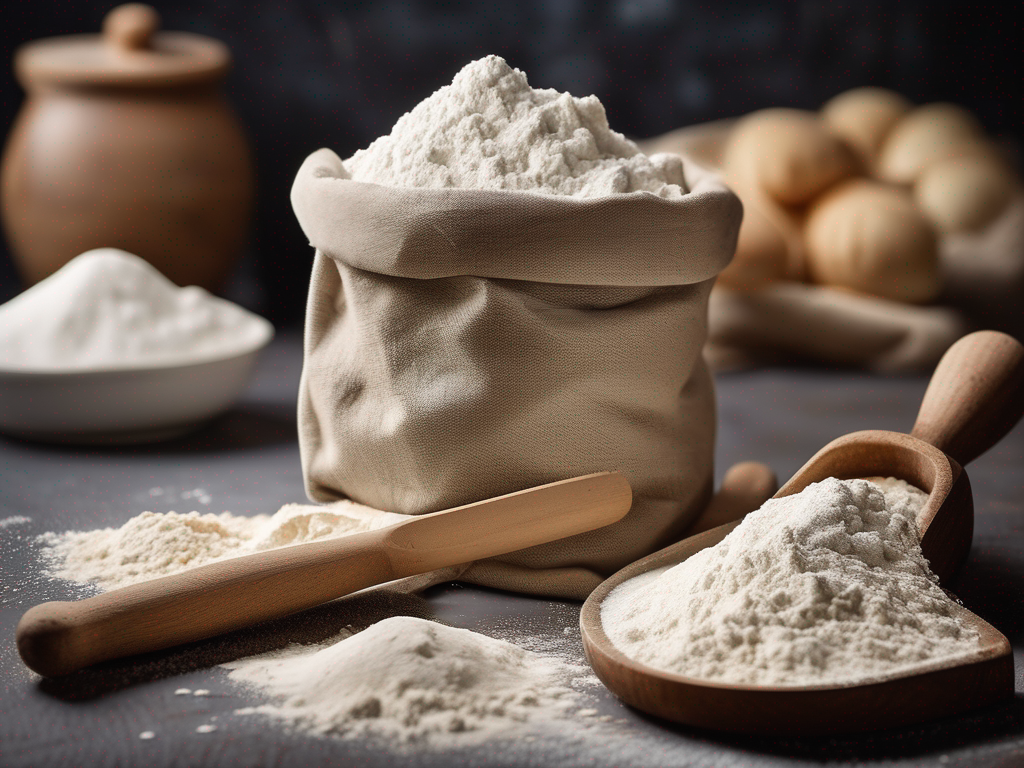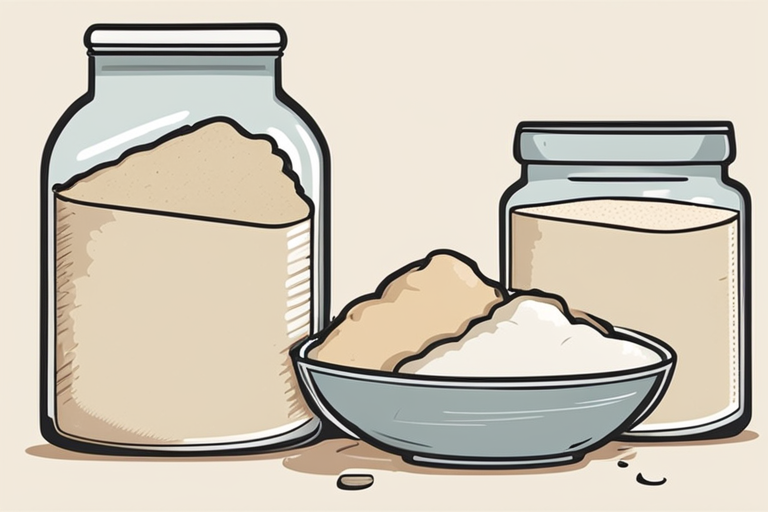
Reviving Old All-Purpose Flour for Baking: A Comprehensive Guide
Get Your Free Food Safety Cheat Sheet
30 most common foods with instant answers. Print it and stick it on your fridge—completely free!
Reviving Old All-Purpose Flour for Baking: A Comprehensive Guide
Have you ever reached for your bag of all-purpose flour only to find that it has been sitting in your pantry for longer than you can remember? If so, you may be wondering if it's still safe to use in your baking endeavors. In this guide, we will explore whether it is possible to revive old all-purpose flour for baking, and provide you with practical tips and safety information to ensure your baked goods turn out perfect every time. (All purpose flour)
Understanding All-Purpose Flour
Before we delve into reviving old all-purpose flour, let's first understand what all-purpose flour is. [All-purpose flour](/food/all purpose flour) is a versatile type of flour that is commonly used in baking. It is made from a blend of hard and soft wheat varieties and is suitable for a wide range of baked goods, from cakes and cookies to bread and pastry.
All-purpose flour typically has a shelf life of about 6-8 months if stored properly in a cool, dry place. Over time, however, all-purpose flour can lose its freshness and may become stale or rancid. When this happens, the flour may not perform as well in recipes, resulting in baked goods that are dense or lack flavor.
Signs of Old All-Purpose Flour
Before attempting to revive old all-purpose flour, it's important to first check for signs of spoilage. Here are some common indicators that your all-purpose flour may be past its prime:
Signs of Spoilage
- Off Odor: If your all-purpose flour smells musty, rancid, or stale, it may have gone bad.
- Visible Mold: Mold growth on the surface of the flour is a clear sign of spoilage.
- Strange Texture: All-purpose flour that feels clumpy, gritty, or has an unusual texture should be discarded.
If your all-purpose flour exhibits any of these signs, it is best to err on the side of caution and dispose of it to avoid the risk of foodborne illness.
Reviving Old All-Purpose Flour
If your all-purpose flour appears to be free from spoilage but has lost its freshness, there are several methods you can try to revive it for baking. Here are some practical tips to help breathe new life into your old all-purpose flour:
1. Sifting
- Sifting the flour can help aerate it and remove any lumps that may have formed over time.
- Use a fine-mesh sieve or flour sifter to sift the flour before using it in your recipes.
2. Mixing
- Give the flour a good stir or whisk to redistribute any moisture that may have settled.
- Mixing the flour can help ensure that it is evenly distributed in your batter or dough.
3. Adding Vital Wheat Gluten
- If your all-purpose flour has lost its gluten strength, you can try adding vital wheat gluten to help improve its elasticity.
- Follow the manufacturer's instructions for the correct amount to add based on the quantity of flour you are using.
4. Testing with a Small Batch
- Before using a large quantity of old all-purpose flour in a recipe, it's a good idea to test it with a small batch first.
- This will allow you to gauge the quality of the flour and make adjustments as needed.
Safety Precautions
When reviving old all-purpose flour for baking, it's important to keep food safety in mind to ensure the quality and safety of your baked goods. Here are some safety precautions to consider:
1. Storage
- Store all-purpose flour in an airtight container in a cool, dry place to help prolong its shelf life.
- Avoid exposing flour to moisture or high temperatures, as this can lead to spoilage.
2. Hygiene
- Wash your hands thoroughly before handling flour to prevent contamination.
- Use clean utensils and equipment when working with flour to avoid introducing bacteria.
3. Labeling
- Label your flour with the date of purchase or expiration to help you keep track of its freshness.
- Rotate older flour to the front of your pantry to ensure it is used before newer purchases.
Conclusion
In conclusion, while it is possible to revive old all-purpose flour for baking, it's important to exercise caution and use your judgment to determine if the flour is still safe to use. By following the tips and safety information outlined in this guide, you can breathe new life into your old all-purpose flour and create delicious baked goods with confidence. Remember to always prioritize food safety and quality when working with flour to ensure the best results in your kitchen. (All purpose flour)

Authoritative Food Safety References
These agencies and university labs inform every tip and health precaution we publish.
USDA FoodKeeper – Cold Storage Guidelines
Official refrigerator, freezer, and pantry timelines maintained by the U.S. Department of Agriculture.
Visit USDA FoodKeeperFDA Produce Safety Rule & Grower Guidance
Field-to-fridge handling practices that prevent contamination of fruits, vegetables, and leafy greens.
Visit FDA Produce SafetyCDC Foodborne Illness Prevention Hub
Surveillance-backed guidance on pathogens, symptoms, and steps to reduce foodborne illness risk.
Visit CDC Food SafetyUC Davis Postharvest Technology Center
University research detailing optimal storage atmospheres for produce after harvest.
Visit UC Davis PostharvestPenn State Extension – Home Food Preservation & Safety
Peer-reviewed extension bulletins on safe canning, chilling, and reheating practices.
Visit Penn State ExtensionCan old all-purpose flour be used for baking?
How can I revive old all-purpose flour for baking?
How can I tell if my old all-purpose flour is still safe to use?
Can I use old all-purpose flour for making bread or pastries?
How should I store old all-purpose flour to keep it fresh for baking?
Get Your Free Food Safety Cheat Sheet
30 most common foods with instant answers. Print it and stick it on your fridge—completely free! Want more? Upgrade to the complete guide with 70+ foods.
Scan your food directly and get instant safety info using our AI-powered camera feature.